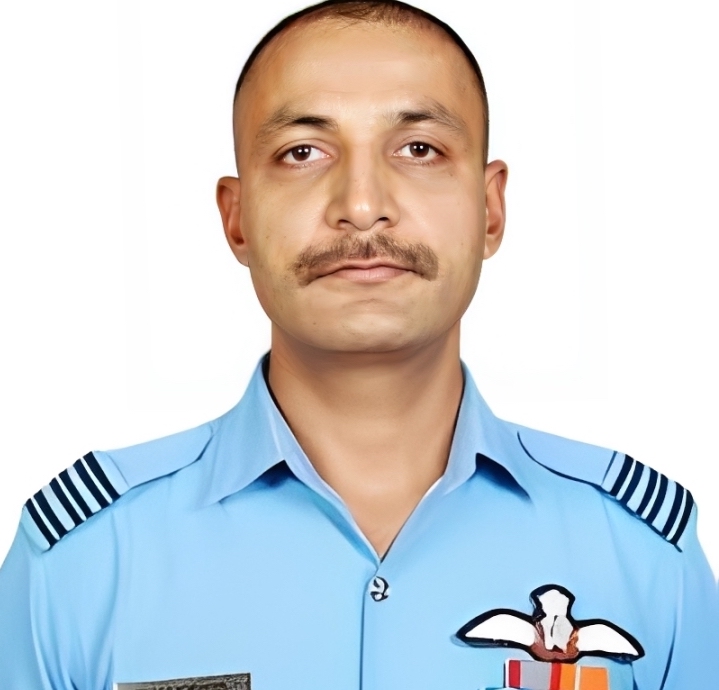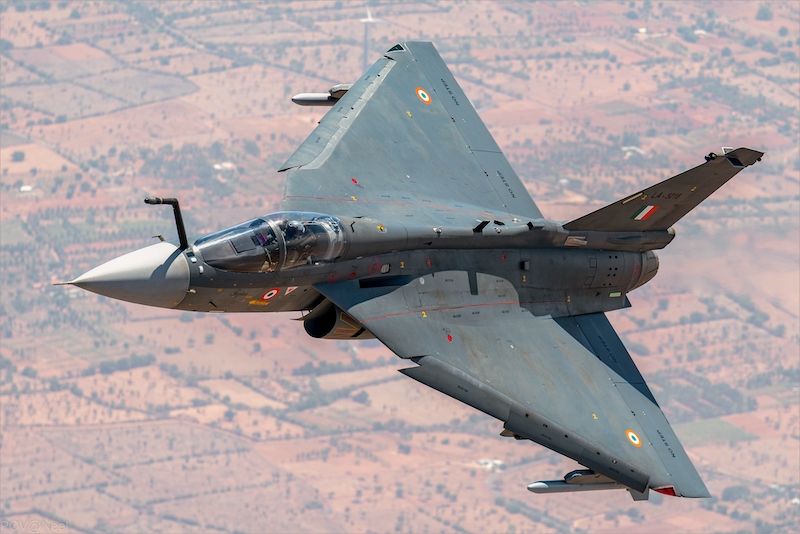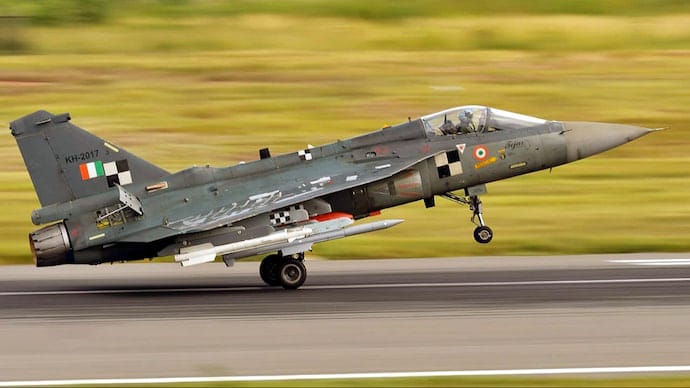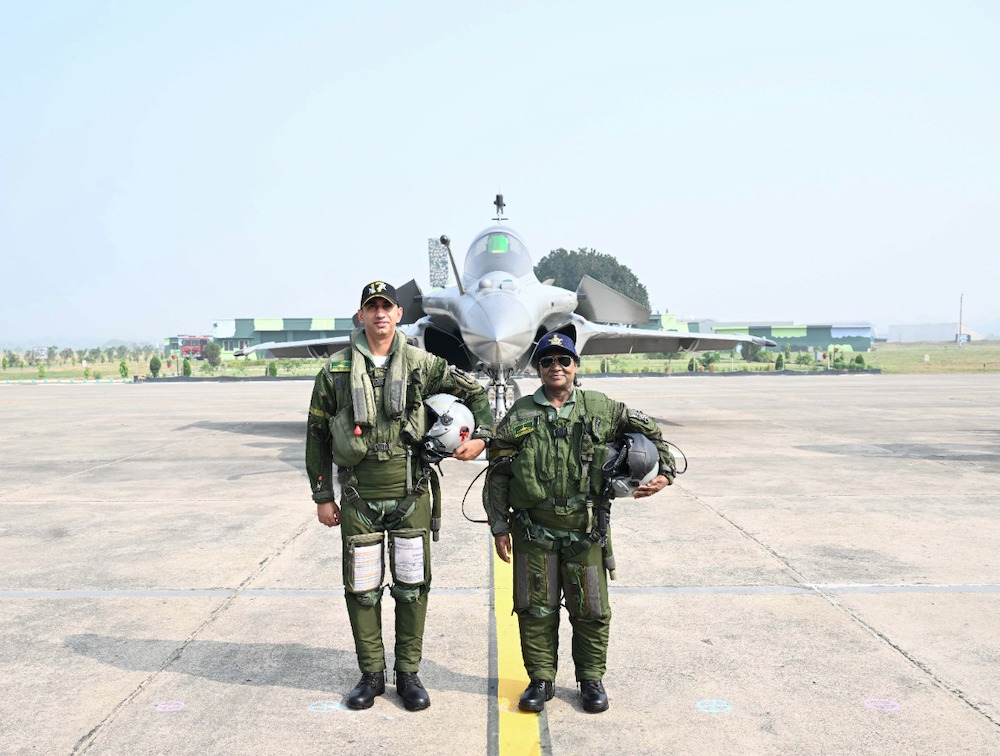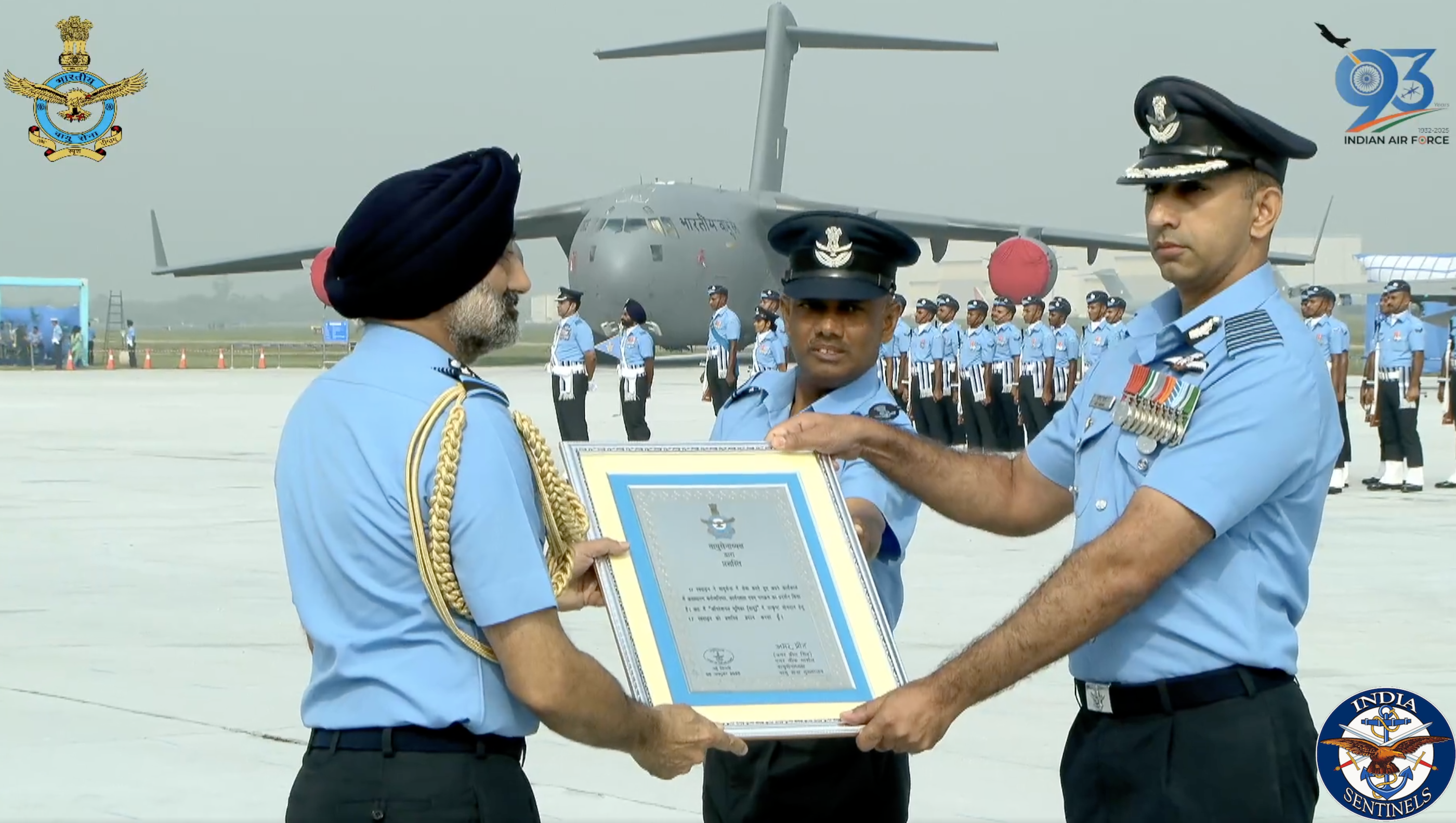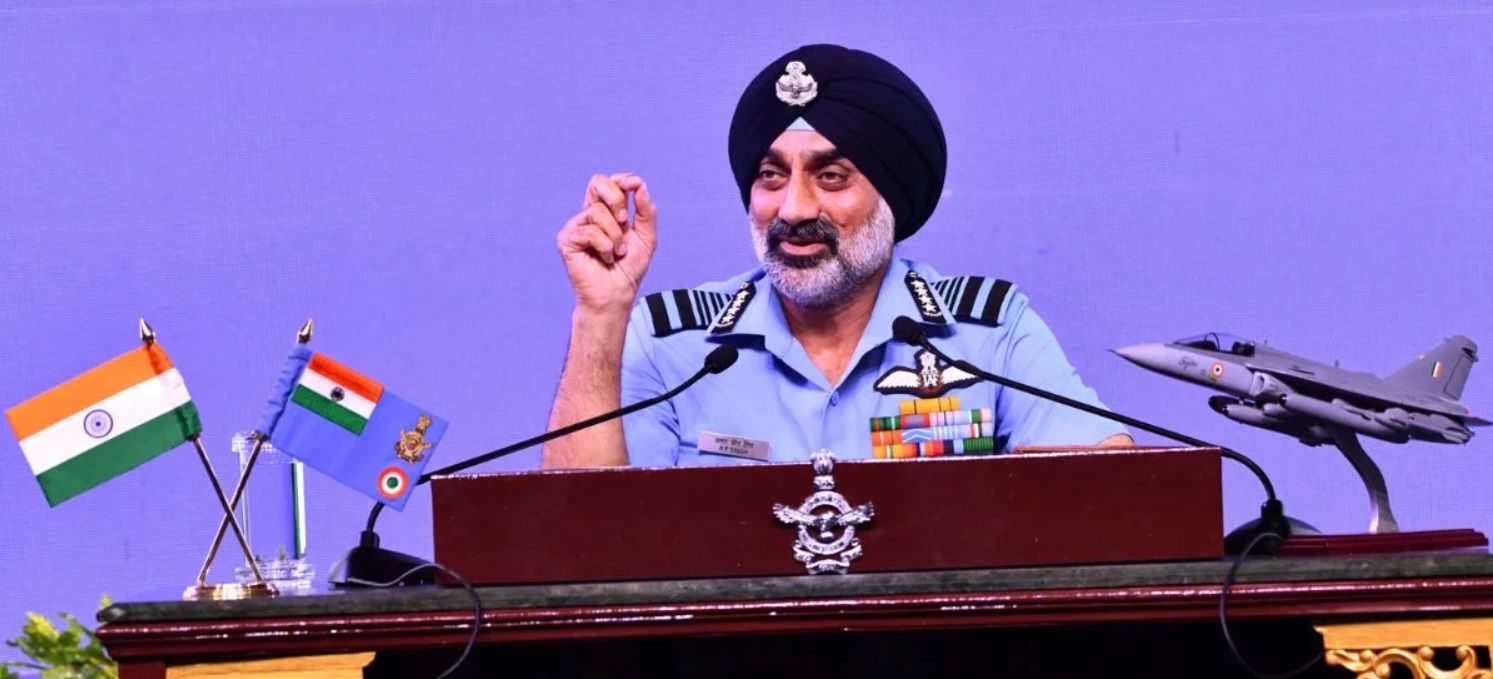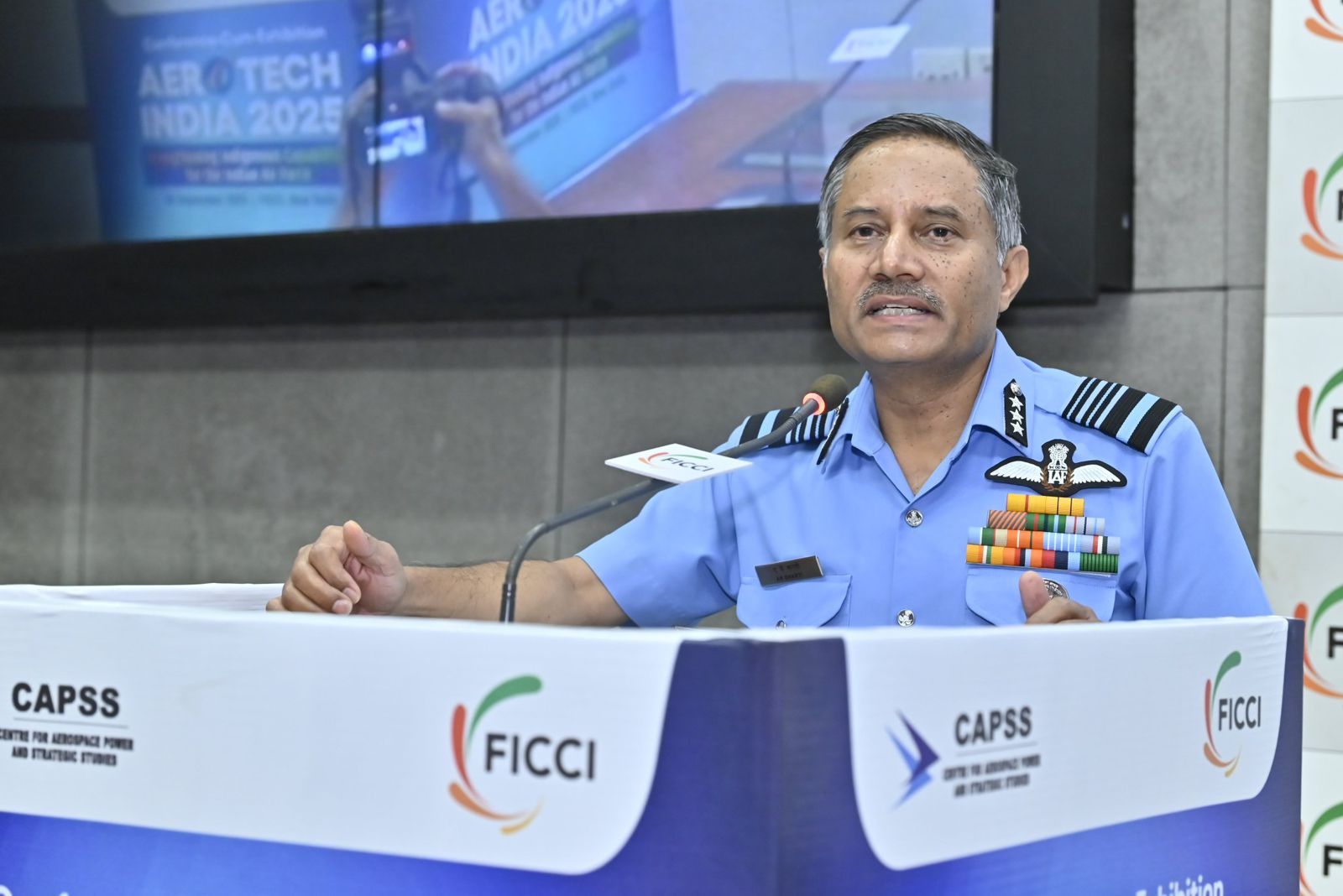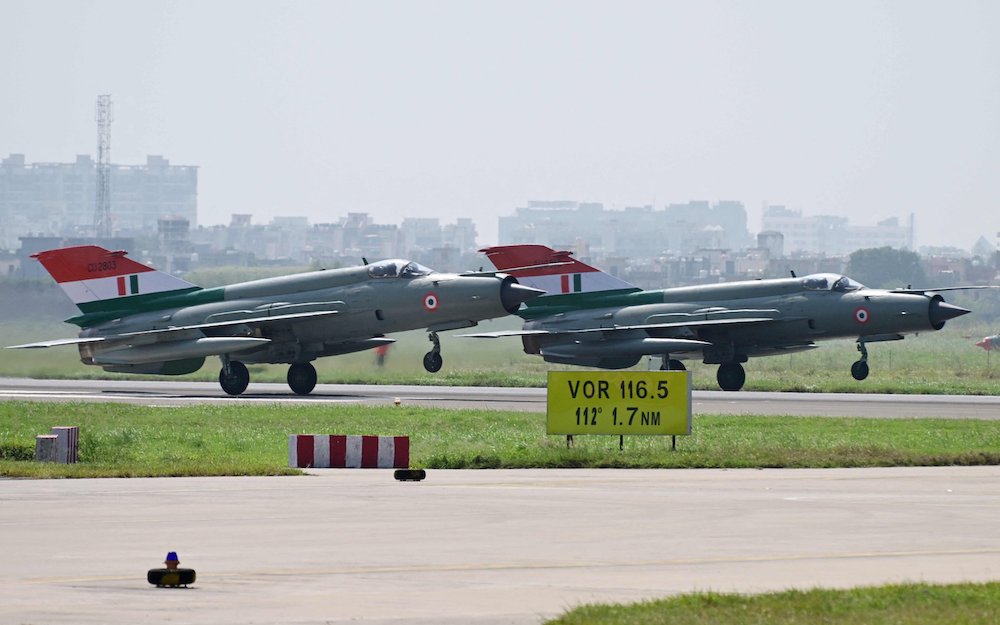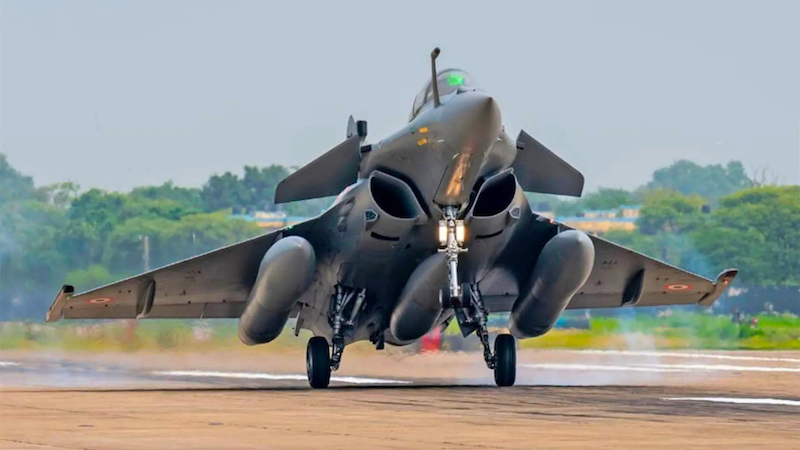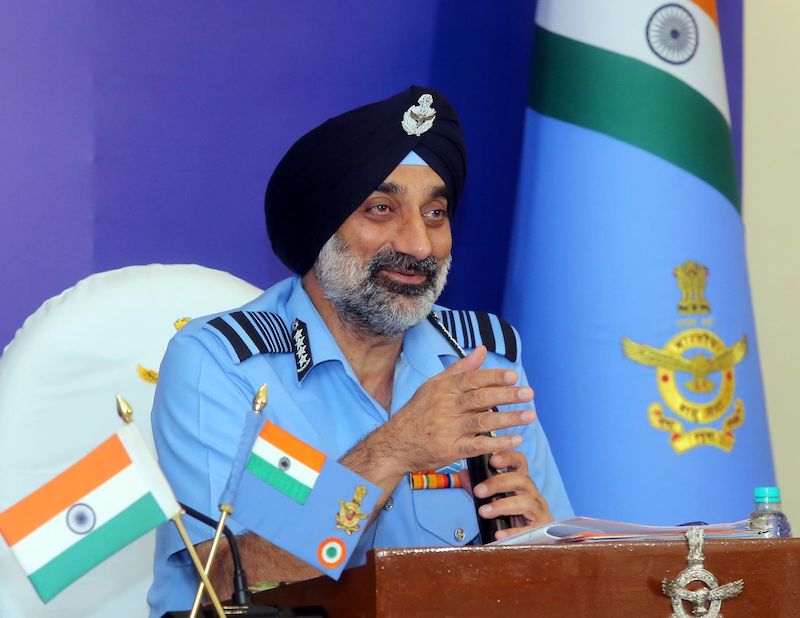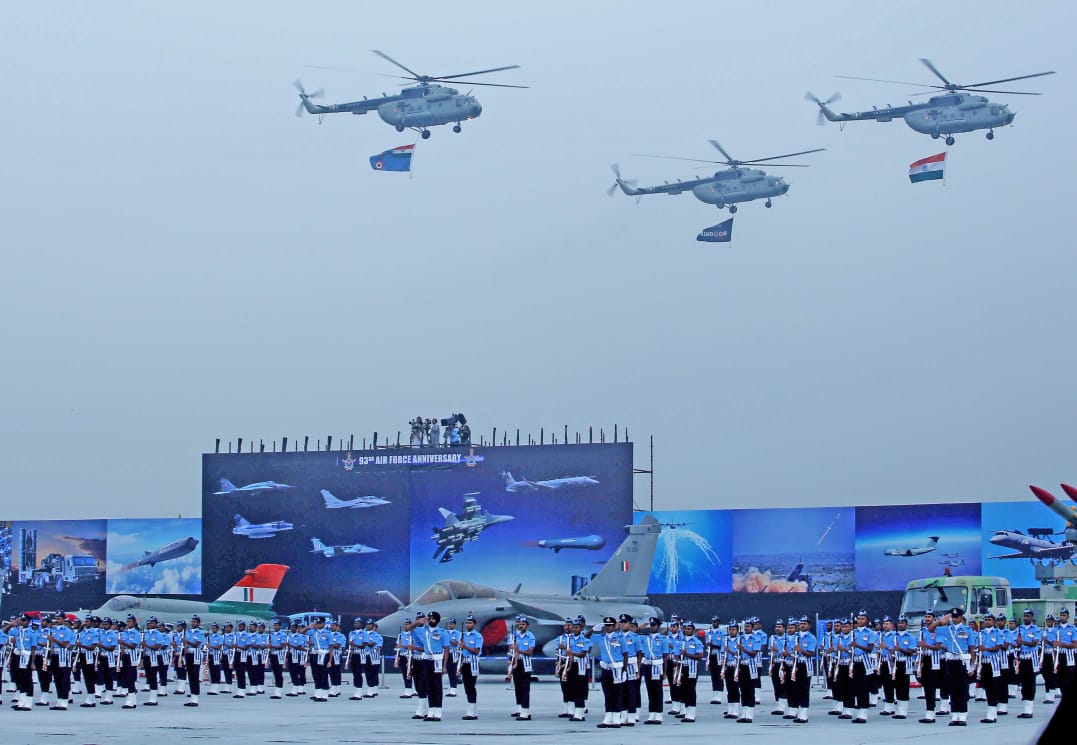 Mi-17 1V helicopters fly past in “Dhwaj” formation during the Indian Air Force Day parade at Hindon AFS. (Photo: IAF)
Mi-17 1V helicopters fly past in “Dhwaj” formation during the Indian Air Force Day parade at Hindon AFS. (Photo: IAF)
Hindon Air Force Station, Ghaziabad: The country celebrated the 93rd anniversary of the Indian Air Force with a grand parade and aerial display here at the Hindon Air Force Station, on Wednesday, marking the occasion with tributes to Operation Sindoor and bidding farewell to the MiG-21 – one of its most storied aircraft.
The event, attended by the chief of defence staff, General Anil Chauhan; the Indian Army chief, General Upendra Dwivedi; the Indian Navy chief, Admiral Dinesh Kumar Tripathi; and the Indian Air Force chief, Air Marshal Amar Preet Singh; and veterans, commemorated the establishment of the Indian Air Force on October 8, 1932, when it began as an auxiliary force under British India with just six officers and four Westland Wapiti biplanes.
Today, the IAF ranks as the world’s fourth-largest air force, operating a diverse fleet that includes French-made Rafales, Russian-origin Sukhoi Su-30MKIs, and indigenously developed platforms.
The 93rd Anniversary of the Indian Air Force was commemorated at Air Force Station Hindan on 08 Oct 2025 with a grand parade, reviewed by Chief of the Air Staff, Air Chief Marshal AP Singh. The event was graced by CDS Gen Anil Chauhan, COAS, CNS, former Chiefs of Air Staff and… pic.twitter.com/dQFhWfqHN5
— Indian Air Force (@IAF_MCC) October 8, 2025
Op Sindoor and MiG-21 farewell
This year’s celebrations centred on Operation Sindoor, which was carried out on May 7 in response to the April 22 terrorist attack in Pahalgam. ACM Singh, in his address during the event, described it as “a shining example of what can be achieved through meticulous planning, disciplined training and determined execution.”
The air chief emphasized the force’s readiness for evolving security challenges, noting that “the world is witnessing a significant geopolitical shift, and recent conflicts have clearly underscored the decisive role of air power in achieving national objectives”.
During the event, ACM Singh honoured six squadrons, including Rafale, BrahMos-equipped Sukhoi, and S-400 squadrons with “Unit Citations”
According to official accounts, the operation targeted nine locations in Pakistan-occupied Kashmir and deeper inside Pakistan, with coordinated strikes on the Nur Khan and Rahimyar Khan airbases. Indian authorities claim the strikes destroyed 12 to 13 Pakistani combat aircraft, including four to five F-16s, and damaged radar installations.
The operation utilized the Integrated Air Command and Control System for real-time coordination across multiple domains, demonstrating the IAF’s ability to conduct precision strikes with advanced indigenous weaponry.
Among the more poignant moments of the anniversary was the tribute to the MiG-21, which concluded 62 years of service with the IAF. The Soviet-origin supersonic fighter, inducted in 1963, participated in the 1971 war, the Kargil conflict, and the 2019 post-Balakot aerial skirmish with Pakistan’s air force.
The aircraft, nicknamed both “supersonic legend” and “flying coffin” – the latter referring to its safety record – was formally decommissioned at a ceremony in Chandigarh on September 26, attended by the defence minister, Rajnath Singh.
Squadron Leader Priya Sharma, one of India’s first women fighter pilots, flew in the farewell sortie. The MiG-21’s retirement signals the IAF’s transition to modern platforms, including the indigenous LCA Tejas and the Rafale.
Indigenous capabilities highlighted
Tuesday’s parade at Hindon, commanded by Group Captain Chetan Pradeep Deshpande, featured a flypast showcasing India’s aerial arsenal. Three Mi-17 1V helicopters performed an aerial salute in “Dhwaj” formation, carrying the national flag, IAF flag, and a flag commemorating Operation Sindoor.
The display included Rafales, Sukhoi-30MKIs, MiG-29s, C-17 Globemaster IIIs, C-130J Super Hercules aircraft, Apache Guardian helicopters, and the Netra Awacs (airborne early warning & control system) – an indigenous platform.
Static displays featured the ALH (advanced light helicopter), Akash surface-to-air missile system, and Rohini radar, while an innovation arena highlighted technological developments from various IAF units.
A heritage flight featuring vintage aircraft – the Tiger Moth, HT-2, and Harvard – provided a historical counterpoint to the modern hardware on display.
President praises IAF
The president, Droupadi Murmu, extended greetings to air personnel, veterans and their families, praising their “unwavering commitment, exceptional courage, and pursuit of excellence”. She noted the force’s dual role in defending national airspace and conducting humanitarian missions during disasters.
The prime minister, Narendra Modi, commended the IAF’s “bravery, discipline and precision”, particularly highlighting its performance “during the most challenging situations” and natural calamities.
Humanitarian role recognized
Beyond its combat role, the IAF’s humanitarian capabilities were recognized through Operation Sindhu, conducted in June to evacuate Indian nationals from conflict zones in Iran and Israel. The force regularly participates in disaster relief operations within India and abroad.
The IAF traces its commissioned officer corps to five pilots who graduated from RAF Cranwell in 1932: Harish Chandra Sircar, Subroto Mukerjee, Bhupendra Singh, Aizad Baksh Awan, and Amarjeet Singh. Mukerjee later became the first Indian chief of air staff, marking a crucial step in the force’s Indianization.
The anniversary celebrations reflected both continuity and change – honouring a legacy built over nine decades while showcasing a force increasingly reliant on indigenous technology and preparing for 21st-century security challenges. The IAF’s motto, “Nabhaḥ Spr̥śaṁ Dīptam” – Touch the Sky with Glory – continues to guide its evolution from a modest colonial auxiliary to a major regional air power.

